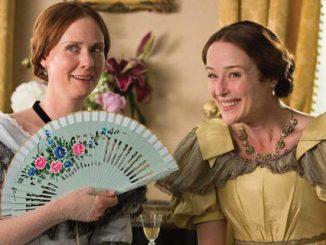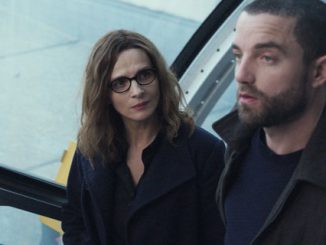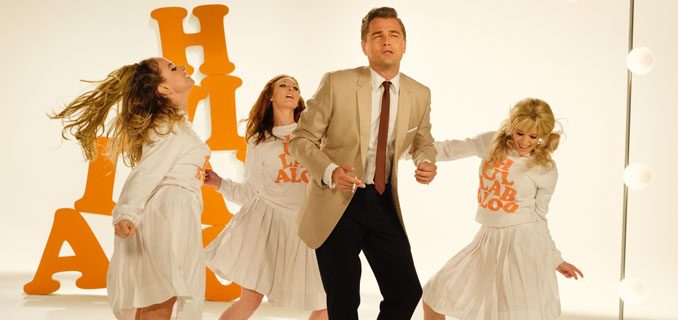
A whole lot of love in “Once Upon a Time…” or a long stern lecture on Australian racism. Now what would you choose to see?
Once Upon a Time… In Hollywood
So much has already been written about Quentin Tarantino’s latest full-bore masterpiece, a loving and sentimental recreation of Hollywood in the era of the Manson murders, that anything more is superfluous. But bear with me, because sadly, too many of those words are from the usual suspects – the perpetually aggrieved, the culture war warriors and those way too determined to catalogue the many ways the hugely popular auteur has failed. He’s white, he’s male, he’s out-of-touch – and so (according to the Australian progressive’s bible of contemporary woke-dom The Monthly) – “on the wrong side of history”. “Obscenely regressive,” sniffed a critic from The New Yorker, citing two fragments of dialogue from the lead characters (Brad Pitt and Leonardo DiCaprio) which apparently denigrate Mexican–Americans. Yes, well… as a “racist” of course, Tarantino’s a serial offender. Although he’s avoided use of the n-word, this time in another comic scene, he denigrates the Asian superstar Bruce Lee, apparently…
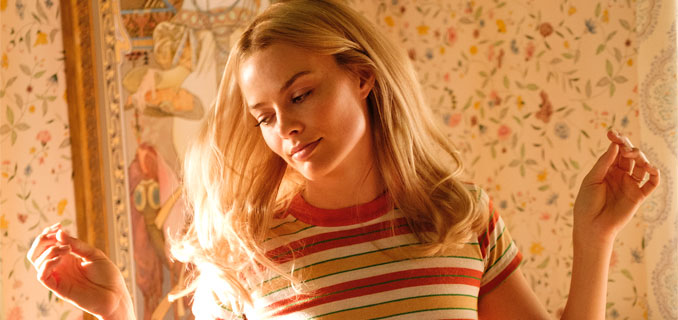
Clearly “he hates hippies” too whined someone else, oblivious to the fact that the Manson girls were not the peace-loving predecessors to today’s massively enlightened Greens-voters, but feeble-minded sadistic mass murderers. Most egregiously of all, he’s “misogynist” in not giving Margot Robbie (above, who gets co-billing with the other two male superstars) enough to say. Incredibly, that prompted Time to count every line of dialogue spoken by a female character in every Tarantino film, and guess what, it’s official! Into the sin-bin, boyo…
All gist for the mill of course, and none of the snark reaches its intended target – for Tarantino famously ignores the Twitterverse, is not on Facebook and simply refuses to engage with anything said online. Bravo, but for me the most outrageous thing in this pretty-well near-perfect 161 minutes of fabulous entertainment was none of the above, but something I have never seen before in a mainstream movie – a scene so outlandish, so scandalous and so rarely seen – that it could almost be classed as obscene. That was one of those hippie girl’s (the fantastically named “Pussycat”, below centre) unshaved armpits – generously shared with us as she tried to seduce stuntman Cliff Booth (Pitt, in his best performance – ever). Now how could that not earn a R18+?
 I wondered if the prosthetics department had supplied something fake – for it’s hard to imagine any actress today (her name is Margaret Qualley, by the way) being brave enough to let body hair sprout anywhere – even if not going waxed and laser-ed back to pre-puberty lands them a part in a Tarantino movie. Cliff resists her charms, by the way, but his gentlemanly refusal had nothing to do with the body hair. Which incredibly – he didn’t seem to mind… Ahh, the 60s! So strange, so astonishing… and so vividly and exquisitely brought to life by a director at the absolute top of his game.
I wondered if the prosthetics department had supplied something fake – for it’s hard to imagine any actress today (her name is Margaret Qualley, by the way) being brave enough to let body hair sprout anywhere – even if not going waxed and laser-ed back to pre-puberty lands them a part in a Tarantino movie. Cliff resists her charms, by the way, but his gentlemanly refusal had nothing to do with the body hair. Which incredibly – he didn’t seem to mind… Ahh, the 60s! So strange, so astonishing… and so vividly and exquisitely brought to life by a director at the absolute top of his game.
The dialogue is less salty and the movie far mellower than we’re used to from the maestro, but there’s still plenty of to thrill fans of Tarantino’s acerbic wit and pop culture fan-boy obsessions as he meanders blissfully and leisurely through the arse-end of that grossly misunderstood decade. Do see it. And please – you must stay for the credits. MA15+ on now at Palace Norton St, Central and everywhere else. ★★★★1/2
The Australian Dream
We all love the power of the crowd – when it’s marching for democracy in Hong Kong, calling for gun control in the US or cheering on a sporting team after a thrilling goal. Not so much when its braying for Brexit or bellowing “lock her up” about Hillary. Or, for that matter, booing an indigenous footie player whenever he comes near the ball… In that later case, the crowd’s behaviour produced an explosion of hand-ringing, a whole lot of posturing, finger pointing and online shouting, much angst-ridden commentary of the “I’m ashamed to be an Australian” variety, and now two feature-length docos. It also ended the AFL football career of one if the code’s greatest ever players.
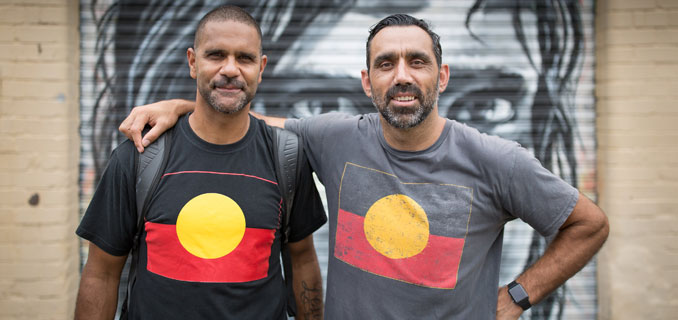
The Australian Dream is a passionate piece of polemic that seethes with anger about racism in this country – the second feature film in as many months about the booing of Adam Goodes. The earlier one, Ian Darling’s The Final Quarter was a crowd favourite at the Sydney Film Festival, and later had a run on Channel 10 where it was watched by about half a million Australians. Goodes didn’t participate in its making – he says the events then were still too raw. However he did agree to a substantial role in director Daniel Gordon’s longer, broader and more incisive examination of those events. It’s the more conventional doco of the two, with Stan Grant on board as writer and narrator, supplying his authority and deep passion in outlining the historical and social context of the crowd’s disgraceful behaviour. His contribution is eloquent, but it sounds a bit too much like its source material – a lecture, adding a tone of unwelcome verbosity to the project. Better are Goode’s own words – juxtaposing his experience in growing up with Australia’s torrid history of racism. He’s a thoughtful, intelligent and persuasive communicator – and it’s gratifying to learn that he’s in a far better place now than when the 2013 “incident” occurred.
Now what more can be said about that? During a match he heard himself called an “ape” and in instinctive surprise turned round and pointed out the offender. He describes how a flood of confused and burning emotion overwhelmed him, the result of decades of denigration, shame and injustice, but as he stood there, he realised he wasn’t pointing at some ugly ranting skinhead, but an emotional 13-year-old girl. Now hindsight is all very well, and he does reflect on what could have happened if he’d just shrugged and turned away, as his own mother had always told him to do. But he didn’t… The next day he was generous and supportive of the young teen, who turned out to be an excitable working class footie fan from a single-parent family who had suffered a pretty rough time after being escorted away by the event’s hired heavies. “It’s not her fault” Goodes told the press, after also (and it’s important to listen to his exact words) tagging her as “the face of racism.” And so it began…
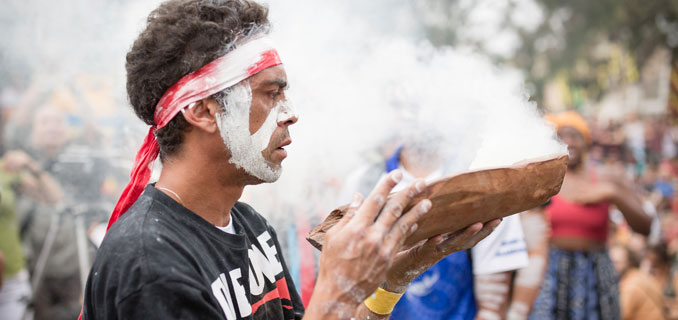
It’s pretty simple, really. Being a called a “racist” now is much the same as once being labelled a “fascist” or a “Nazi” once was. And as that old rule of debating proves, over and over again, if you accuse someone of that – you lose. End of story, the rights and wrongs of the situation are irrelevant. And to then double down and single out heroes and villains, as so many culture war partisans did, and are still doing, just make it a bigger loss. The young girl apologised profusely in a teary live TV circus not long after, saying she didn’t understand the wider meaning of her insult. Who really knows the truth of that, but in all the hundreds of thousands of column inches now written on the booing and its aftermath, has anyone thought to enquire what happened to her? With a single word she not only brought the curtain down on a great player’s lucrative career, but also incited five years of national self flagellation. Without her, this film would not have been made… She’d be 19 now, but unlike most of the inner city, educated and socially aware audience for The Australian Dream, probably hasn’t made it to uni. Couldn’t it’s producers have tracked her down and checked out what she thought now about her role in those pivotal events? Or even just asked, how was she getting on?
But no one ever has.
MA15+ from Aug 22. Local cinemas include Palace Norton St, Central, Broadway and Dendy Newtown ★★★
Reviews – Russell Edwards
